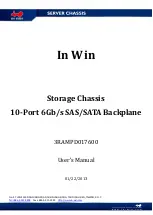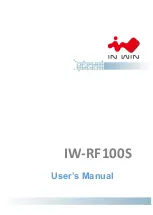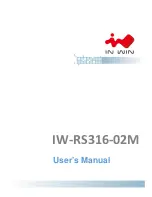
1-2
Cisco ASA Series CLI Configuration Guide
Chapter 1 Configuring QoS
Information About QoS
Supported QoS Features
The ASA supports the following QoS features:
•
Policing—To prevent individual flows from hogging the network bandwidth, you can limit the
maximum bandwidth used per flow. See the
“Information About Policing” section on page 1-3
more information.
•
Priority queuing—For critical traffic that cannot tolerate latency, such as Voice over IP (VoIP), you
can identify traffic for Low Latency Queuing (LLQ) so that it is always transmitted ahead of other
traffic. See the
“Information About Priority Queuing” section on page 1-3
for more information.
•
Traffic shaping—If you have a device that transmits packets at a high speed, such as a ASA with
Fast Ethernet, and it is connected to a low speed device such as a cable modem, then the cable
modem is a bottleneck at which packets are frequently dropped. To manage networks with differing
line speeds, you can configure the ASA to transmit packets at a fixed slower rate. See the
“Information About Traffic Shaping” section on page 1-4
for more information.
What is a Token Bucket?
A token bucket is used to manage a device that regulates the data in a flow. For example, the regulator
might be a traffic policer or a traffic shaper. A token bucket itself has no discard or priority policy.
Rather, a token bucket discards tokens and leaves to the flow the problem of managing its transmission
queue if the flow overdrives the regulator.
A token bucket is a formal definition of a rate of transfer. It has three components: a burst size, an
average rate, and a time interval. Although the average rate is generally represented as bits per second,
any two values may be derived from the third by the relation shown as follows:
average rate = burst size / time interval
Here are some definitions of these terms:
•
Average rate—Also called the committed information rate (CIR), it specifies how much data can be
sent or forwarded per unit time on average.
•
Burst size—Also called the Committed Burst (Bc) size, it specifies in bits or bytes per burst how
much traffic can be sent within a given unit of time to not create scheduling concerns. (For traffic
shaping, it specifies bits per burst; for policing, it specifies bytes per burst.)
•
Time interval—Also called the measurement interval, it specifies the time quantum in seconds per
burst.
In the token bucket metaphor, tokens are put into the bucket at a certain rate. The bucket itself has a
specified capacity. If the bucket fills to capacity, newly arriving tokens are discarded. Each token is
permission for the source to send a certain number of bits into the network. To send a packet, the
regulator must remove from the bucket a number of tokens equal in representation to the packet size.
If not enough tokens are in the bucket to send a packet, the packet either waits until the bucket has
enough tokens (in the case of traffic shaping) or the packet is discarded or marked down (in the case of
policing). If the bucket is already full of tokens, incoming tokens overflow and are not available to future
packets. Thus, at any time, the largest burst a source can send into the network is roughly proportional
to the size of the bucket.
Note that the token bucket mechanism used for traffic shaping has both a token bucket and a data buffer,
or queue; if it did not have a data buffer, it would be a policer. For traffic shaping, packets that arrive that
cannot be sent immediately are delayed in the data buffer.
Summary of Contents for 5505 - ASA Firewall Edition Bundle
Page 28: ...Glossary GL 24 Cisco ASA Series CLI Configuration Guide ...
Page 61: ...P A R T 1 Getting Started with the ASA ...
Page 62: ......
Page 219: ...P A R T 2 Configuring High Availability and Scalability ...
Page 220: ......
Page 403: ...P A R T 2 Configuring Interfaces ...
Page 404: ......
Page 499: ...P A R T 2 Configuring Basic Settings ...
Page 500: ......
Page 533: ...P A R T 2 Configuring Objects and Access Lists ...
Page 534: ......
Page 601: ...P A R T 2 Configuring IP Routing ...
Page 602: ......
Page 745: ...P A R T 2 Configuring Network Address Translation ...
Page 746: ......
Page 845: ...P A R T 2 Configuring AAA Servers and the Local Database ...
Page 846: ......
Page 981: ...P A R T 2 Configuring Access Control ...
Page 982: ......
Page 1061: ...P A R T 2 Configuring Service Policies Using the Modular Policy Framework ...
Page 1062: ......
Page 1093: ...P A R T 2 Configuring Application Inspection ...
Page 1094: ......
Page 1191: ...P A R T 2 Configuring Unified Communications ...
Page 1192: ......
Page 1333: ...P A R T 2 Configuring Connection Settings and QoS ...
Page 1334: ......
Page 1379: ...P A R T 2 Configuring Advanced Network Protection ...
Page 1380: ......
Page 1475: ...P A R T 2 Configuring Modules ...
Page 1476: ......
Page 1549: ...P A R T 2 Configuring VPN ...
Page 1550: ......
Page 1965: ...P A R T 2 Configuring Logging SNMP and Smart Call Home ...
Page 1966: ......
Page 2059: ...P A R T 2 System Administration ...
Page 2060: ......
Page 2098: ...1 8 Cisco ASA Series CLI Configuration Guide Chapter 1 Troubleshooting Viewing the Coredump ...
Page 2099: ...P A R T 2 Reference ...
Page 2100: ......















































